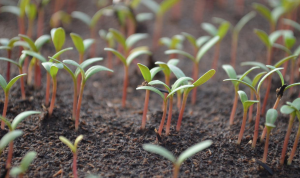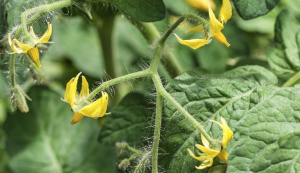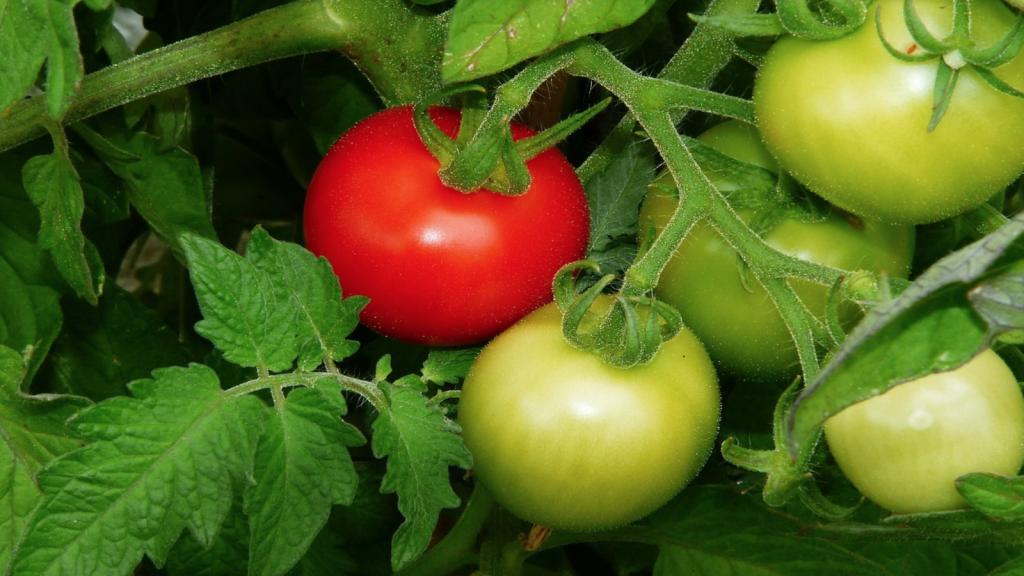Tomato Farming if well done will produce optimally when supplied with enough nutrients and water, these are through basal and foliar fertilizer application. Basal fertilizers, e.g. DAP are absorbed by the plant majorly through the roots while foliar fertilizers, are taken up through the plant’s foliage. Step by step f Tomato Farming.
Seedbed preparation in tomato farming
An ideal site should be sunny with a well-drained, soil sandy soil and not exposed to strong wind. Make sure to do a soil test so that you are sure of its composition. When you know that your soils are good. Tilt thoroughly as you mix organic matter and add whatever the soil is lacking if required. Fumigate if necessary. The beds should be 1m wide and 150mm higher than ground level for water run-off with the widths level to improve drainage. When raising seedlings in the nursery, proper nursery management should be ensured for your tomato farming. Drench soil, as this helps in breaking seed dormancy, promoting uniform germination as well as providing nutrients to the young plants. Sow the seeds in shallow furrows 100mm to 150mm apart then cover seeds to a depth of 10mm-15mm. Tomato seeds are fairly small and if you plant them too deeply, you’ll never see them again.
Use straw or grass to cover the seedbed to retain moisture and reduce splash effects during watering of your tomato farm. The watering should be done in the morning. Weeds in the seedbed should be removed by hand. The soil should be watered (moisture) frequently by irrigating lightly, which should be reduced 10 days before transplant. To ensure the plants can be plucked easily, the beds should be soaked a day before to avoid root damages. Tomato seedlings take 30 days under warm conditions and 60 days or more under cooler weather.
During transplant, avoid root damages and over exposure to the sun by covering them to keep them moist. Plant seedling slightly deeper in to moist soil and firm the soil around the roots. Thereafter water the plants.
Seed trays
Mix soil with fertilizer diluted with water thereafter spread soil in the tray without compacting. Place each seed at the center of each cube on the tray. Cover the seed with soil (sieved) then water and cover with a black plastic bag for almost 1 week. Always check wetness before watering. Use a fine sprinkler if possible when watering. Thin out excess plants by hand.
Check for any fungal infections and apply a fungicide to prevent this. Newly transplanted seedling are sprayed with a starter foliar in the second week. These provide Phosphorous, among other nutrient elements, highly required in root formation and for early crop development. Monitor seedling development; reduce quantity of fertilizer if there is rapid growth before transplant. Reduce watering 7 days before transplanting to harden the plant. After 30 days and with 2-4 true leaves the plant is ready for transplant. A healthy tomato seedling appears to have 4-5 leaves, stocky, no flower or bud, 15cm tall.
Certainly crop nutrition is important during the development of the plant. Tomato needs nitrogen, magnesium, phosphorus, potassium, calcium and other minerals for better yields. During root development, healthy roots are essential for nutrients and water intake. Phosphorus ensures good root development and fruit production. Equally, nitrogen helps with green vegetative growth and potassium boosts plant immunity and flavor. However a soil test should determine the levels of nitrogen hence the ratio to be applied. A fertilizer higher in phosphorus and potassium is highly recommended to enable production of fruits.
Early growth

During early growth of tomato plant, nitrogen and phosphorus ensure continued growth as potassium and magnesium strengthen concentrations in the leaf tissue before flowering. Similarly calcium and sulfur will maintain plant growth as manganese, zinc, boron and molybdenum ensure growth continuation. During this development stage DAP is applied in order to majorly also provide Phosphorous. Depending on the levels of organic matter in the soil, manure should be applied.
Vegetative growth stage
This is the stage when plant begins photosynthesis and is actively growing. It is during this time when the plant accumulates enough resources for use during flowering and fruit development and the tomato farming cycle.
- Spray crop with a vegetative foliar which is are rich in Nitrogen among other elements like Magnesium, Iron etc. which promotes vegetative growth.
- Top dressing using CAN is essential. Other basal fertilizers like N.P.K 23.23.0 can be applied at this stage in order to ensure the crop gets sufficient amounts of Nitrogen among other elements.
Flowering and fruiting

Flowering and fruiting require nitrogen and potassium for plant growth and production of flowers. Phosphorus and calcium is for fruit development and crop reproduction development respectively. Likewise boron and zinc will play a part in the plant growth and fruiting and the entire cycle of tomato farming.
Lastly during fruit ripening and maturity, nitrogen application will be reduced to maintain fruit fill while phosphorus and potassium will boost nutritional quality and minimize any anomalies respectively. Calcium and magnesium will maintain fruit firmness and quality production. Lastly boron and zinc will maintain even ripening of the fruit. To prevent Blossom End Rot, a product which supplies enough Calcium to the crop, before the fruits form.
Early scouting and use of agro chemicals as a way of pest and diseases management is important as tomato is susceptible to early and late blight, bacterial wilt, mildew, red spider, tuta absoluta and other diseases. {We have highlighted on this diseases in our blog on the website}. Likewise weeding should be done to stop weeds from competing for nutrients with the plants.
Tips on successful tomato farming!
- Nitrogen should not be supplied in large quantities because this may lead to lush, green tomato plants with very few fruits.
- Potassium is required throughout the growth season as it helps in maintaining the ionic balance and water status within the plant. Too much of it however restricts uptake of other elements.
- Spray a booster at any stage of growth and development in order to help boost the crop’s immunity, manage stress and improve the general performance of the crop.
- A repeat of foliar spray should be done on weekly basis while still monitoring the crop performance.
- Whenever doing foliar spray of the fertilizers, always mix the foliar feed with a sticker which helps in spreading and penetration of the foliar. This improves on the absorption of the fertilizer by the foliage of the crop.
- Fertilizer should be applied at the right time and right rate, considering the growth stage.
Companies like Bayer EA and Amiran have launched new tomato varieties resistant to bacterial wilt. This is a boost to the tomato farmer. Basically tomato should be ready for harvesting any time after 2 ½ months depending variety and plant management. It is highly perishable and the need to reach the market quickly cannot be over emphasized to reduce post – harvest losses. An acre can produce approximately 35 tonnes of tomato if proper farming practices and plant management are adhered to.
Value addition in tomato farming
In the meantime, Kisumu County Government has put up a tomato processing factory in Kobura Ward, Nyando Sub – County. This is a bold step towards industrialization with an aim of improving livelihoods.
Above all, it is envisioned that the Kochieng’ Tomato Processing Plant will solve the issues of poor markets, excess production and post – harvest losses by processing for value addition. Moreover, it will also offer job opportunities. In future, the Plant will venture in to processing other products like mangoes, pineapples, avocadoes and many other fruits. Primarily this should encourage tomato farmers to increase their production and if possible diversify when one product is out of season (crop rotation). With proper sensitization on best farming practices, access to information, access to and affordability to certified seeds and farm implements, farmers should be in a position to sustain quality and quantity of raw materials (fruits and vegetables) to the Plant.
With the project being run by Kochieng’ Multipurpose Cooperative Society, the farmers will be able to access financing and markets for their processed products. The community is not left behind as it will benefit from a 15m solar mast floodlight and a water borehole for domestic use.
In short, such projects should be replicated in all the 47 counties for the Big 4 Agenda to be realized as each County has unique product(s).
For more on Tomatoes
1. Tomato Planters, A Comprehensive Guide for Success read here

Pingback: 17 best tomato variety to grow in USA - Agri Innovation Hub
Pingback: 39 High Yielding Tomato Varieties To Grow in India - Agri Innovation Hub
Pingback: Tomato Farming, Diseases Management - Agri Innovation Hub